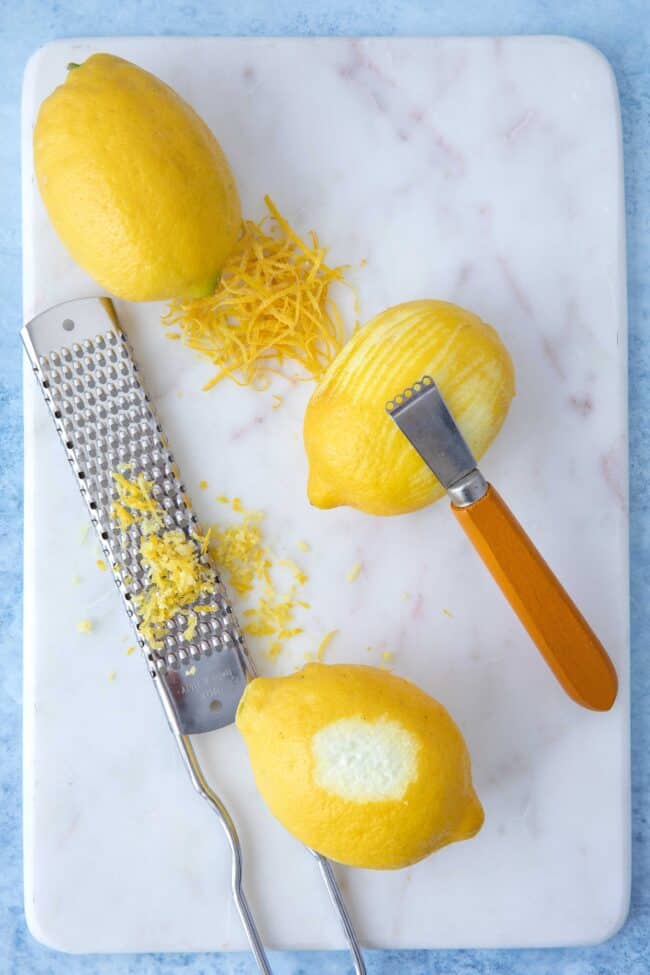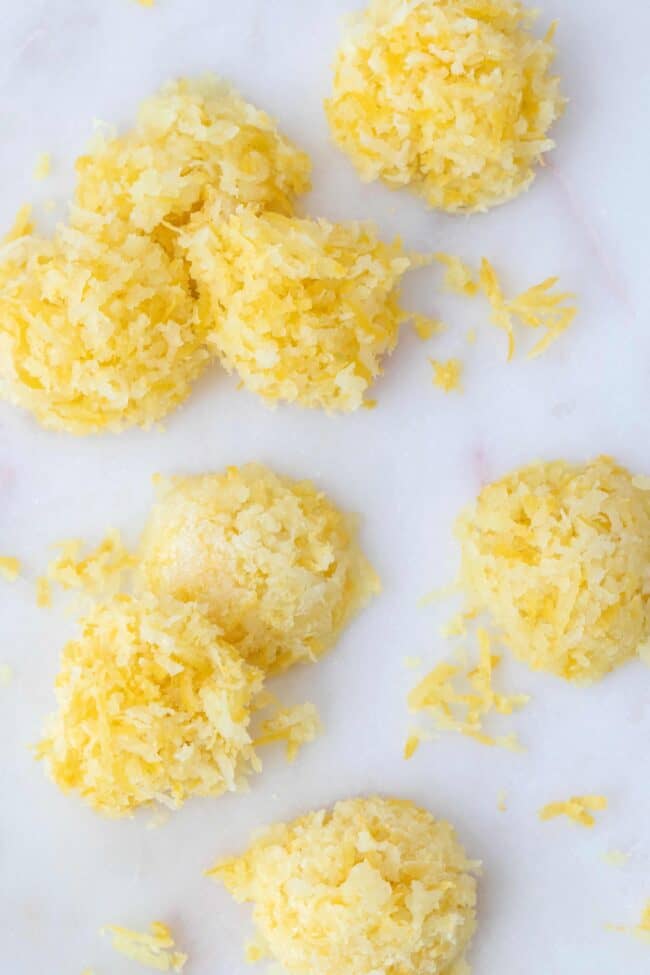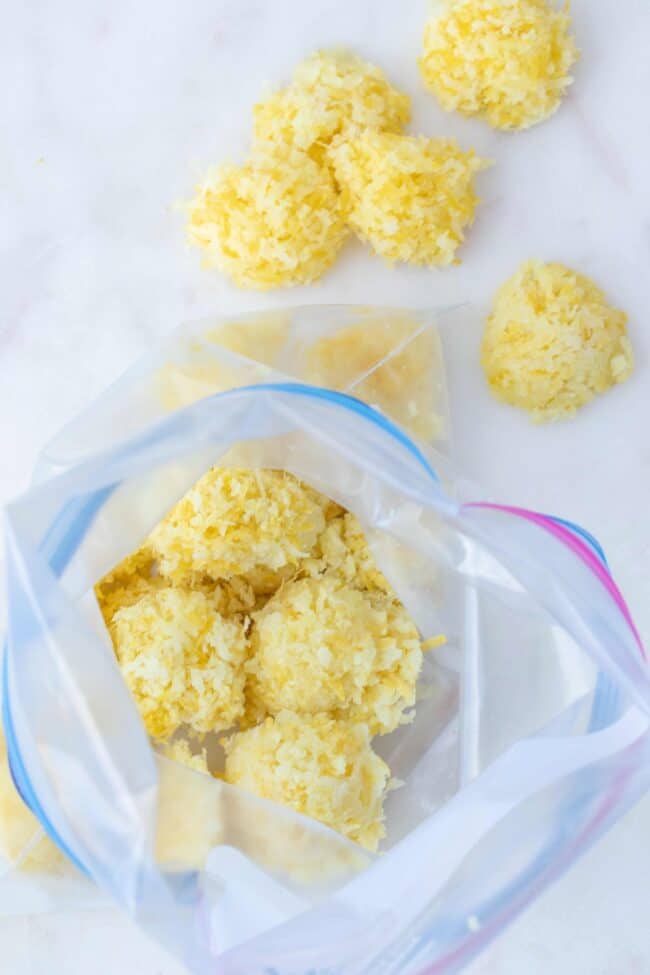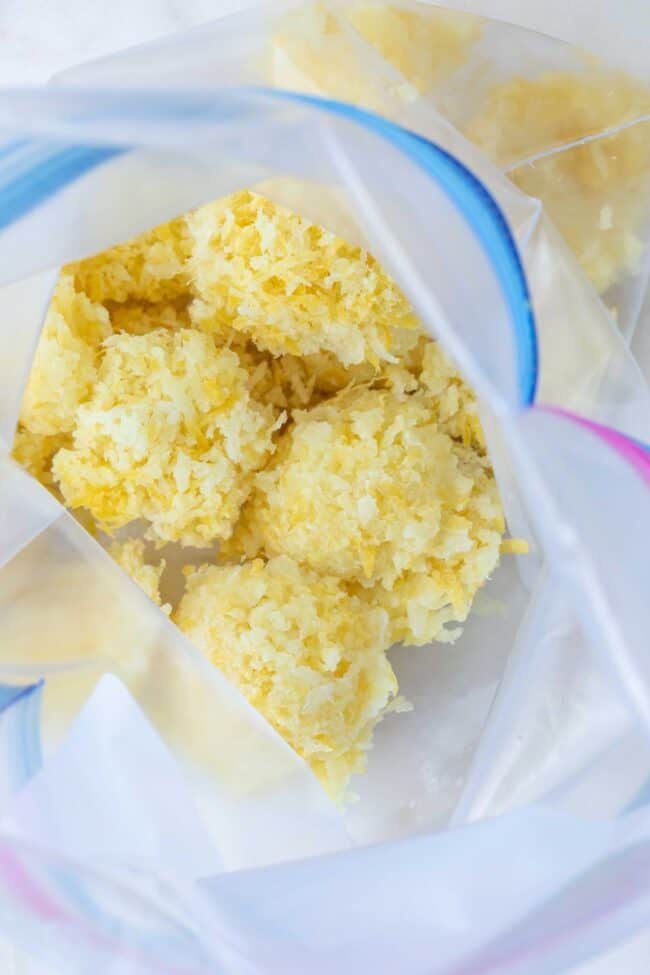How to Zest a Lemon
In this post, we’ll share How to Zest a Lemon, how to store it and how to use it. After you know how to make lemon zest, you’ll be adding it to soups, smoothies, salads, chicken dishes and more.
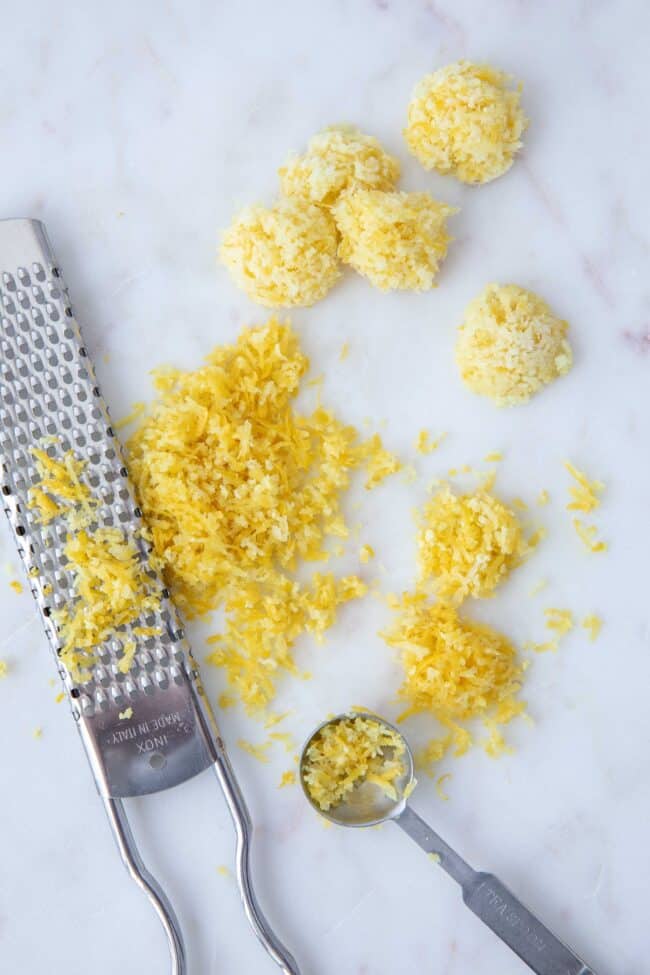
Lemon zest adds such a pop of flavor to just about any dish (the possibilities are endless really) and zesting lemons couldn’t be easier with these simple tips.
A good habit to get into is – whenever you pick up a lemon to squeeze for juice, be sure to zest the lemon first, then freeze the zest for later. That way you’ll always have these bright flavorful flecks of immune-boosting nutritional gold to add to your recipes.
What is Lemon Zest?
Citrus zest is the outermost layer of the peel which is known as the flavedo. This flavedo (outer layer) contains a compound known as D limonene, which gives lemon peel its fragrant aroma.
The soft spongy white inner layer (“pith”) which is between the peel (zest) and the fruit has a neutral or slight bitter flavor, but it’s also rich with nutritional value.
How Do You Make Lemon Zest?
Be sure to rinse the lemon under cold water and pat dry. If you’re not using organic lemons, you can rinse with baking soda and water and gently rub the lemon peel to wash away any residue. Lay a piece of parchment paper on the counter to catch the flecks of zest.
- Microplane or Cheese Grater. Use a microplane or cheese grater. Run the side of a lemon back and forth over the microplane or grater being careful not to get the pith. You may get a little added pith to your zest and that’s perfectly okay. Continue to rotate the lemon until you have the desired amount of zest.
- Citrus zester. Using a citrus zester will provide longer pieces of zest. Run the zester along the side of a lemon and scrape down the sides. Continue to rotate the lemon until you have the desired amount of zest.
- Vegetable peeler or Knife. If you don’t have a microplane, cheese grater or citrus zester, then you can use a vegetable peeler or a pairing knife. Carefully run the peeler or knife along the side of a lemon to scrape down the sides. You’ll need to cut the pieces into much smaller pieces (finely mince) if you’re adding to recipes.
How Much Zest in a Lemon?
That will depend on the size of the lemon and how ripe with juice the lemon is. On average one medium-size lemon may provide 2-3 tablespoons of juice and about 1 tablespoon of lemon zest.
Can You Freeze Lemon Zest?
Citrus zest can be kept in a sealed plastic bag in the refrigerator for up to a week, and if kept in a tightly sealed freezer bag, it can be stored in the freezer for up to six months.
- Line a cookie sheet with a Silpat, parchment paper or waxed paper.
- Label freezer bags with date and contents of bag.
- Zest the desired amount.
- Squeeze a few drops of lemon juice in the zest. This helps the zest stick together better when frozen.
- Using a teaspoon, measure the lemon zest and place by the teaspoonfuls on a Silpat, parchment or waxed paper.
- Pop in the freezer for 30-45 minutes, or until frozen solid and won’t flake apart when touched.
- Transfer the frozen lemon zest discs to a plastic freezer bag.
How Do You Use Lemon Zest?
Lemon zest is such a great addition to so many recipes for not only the perky pop of flavor but for nutritional benefits as well.
- Stir into vinaigrettes
- Toss into salads
- Stir into soups
- Toss with garlic and olive oil for roasted vegetables
- Add to smoothies (I do this a lot)
- Simmer with fresh ginger in water for a tea
- Sprinkle over yogurt
- Toss with berries to add to hot cereal (like oatmeal)
- Stir into sauces
- Add to marinades
- Sprinkle over seafood dishes
- Use it to bake with (like for blueberry muffins, etc).
- Add it to pancake batter (lemon blueberry pancakes)
- Blend it with herb butter (for garlic bread, flour tortillas and corn on the cob)
- Mix with fresh dill and yogurt for a lemon dill sauce.
Looking for more lemon recipes?
- Lemon Ginger Morning Detox Drink
- Detox Honey Lemon Ginger Slices
- Immune Boosting Whole Lemon Ice Cubes
- Cleansing Lemon Herb Vinaigrette
- Nourishing Lemon Chicken Quinoa Soup
More Cooking Resources
- How to Freeze Grapes
- How to Freeze Tomatoes
- How to Cut a Pomegranate
- How to Freeze Spinach
- How to Make Sun Dried Tomatoes
- How to Store Tomatoes
- How to Make Quinoa
- How to Poach Chicken
- How to Make Basil Pesto
- How to Freeze Bananas for Smoothies
- How to Cook Lentils
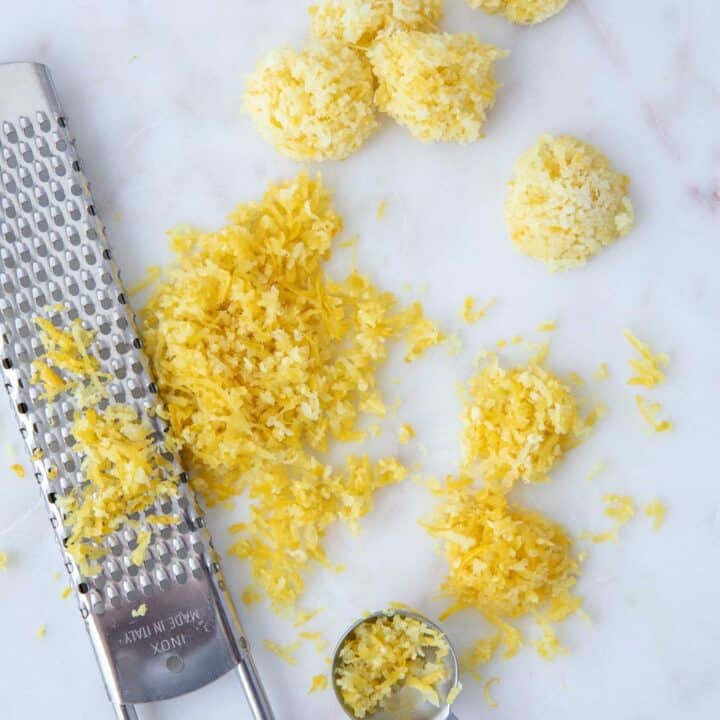
How to Zest a Lemon
In this post, we'll share How to Zest a Lemon, how to store it and how to use it. After you know how to make lemon zest, you'll be adding it to soups, smoothies, salads, chicken dishes and more.
Ingredients
- 1 lemon
Instructions
- Microplane or Cheese Grater. Using a microplane or cheese grater are the easiest ways to grate lemon zest.Run the side of a lemon back and forth over the microplane or grater being careful not to get the pith. You may get a little added pith to your zest and that's perfectly okay. Continue to rotate the lemon until you have the desired amount of zest.
- Citrus zester. Using a citrus zester will provide longer pieces of zest. Run the zester along the side of a lemon and scrape down the sides. Continue to rotate the lemon until you have the desired amount of zest.
- Vegetable peeler or Knife. If you don't have a microplane, cheese grater or citrus zester, then you can use a vegetable peeler or a pairing knife. Carefully run the peeler or knife along the side of a lemon to scrape down the sides. You'll need to cut the pieces into much smaller pieces (finely mince) if you're adding to recipes.
Notes
Tips
Be sure to rinse the lemon under cold water and pat dry. If you're not using organic lemons, you can rinse with baking soda and water and gently rub the lemon peel to wash away any residue. Lay a piece of parchment paper on the counter to catch the flecks of zest.
Whenever you pick up a lemon to juice it for a vinaigrette or whatever, zest it first before juicing, then freeze the zest for later. That way you won't waste an important part of the fruit and you'll always have these bright flavorful flecks of nutritional gold to add to your recipes.
Can You Freeze Lemon Zest
Citrus zest can be kept in a sealed plastic bag in the refrigerator for up to a week, and if kept in a tightly sealed freezer bag, it can be stored in the freezer for up to six months.
Line a cookie sheet with a Silpat, parchment paper or waxed paper.
Label freezer bags with date and contents of bag.
Zest the desired amount of lemon zest.
Squeeze a few drops of lemon juice in the zest. This helps the zest stick together better when frozen.
Using a teaspoon, measure the lemon zest and place by the teaspoonfuls on a Silpat, parchment or waxed paper. (I like to measure out the zest by the teaspoonful that way when I toss them in recipes - it's already measured out for me).
Pop in the freezer for 30-45 minutes, or until frozen solid and won't flake apart when touched.
Transfer the frozen lemon zest discs to a plastic freezer bag.
How to Use It
Lemon zest is such a great addition to so many recipes for an added perky pop of flavor and nutritional benefits.
Stir into vinaigrettes
Toss into salads
Stir into soups
Toss with garlic and olive oil for roasted vegetables
Add to smoothies (I do this a lot)
Sprinkle over yogurt
Toss with berries to add to hot cereal (like oatmeal)
Stir into sauces
Add to marinades
Sprinkle over seafood dishes
Use it to bake with (like for blueberry muffins, etc).
Add it to pancake batter (lemon blueberry pancakes)
Blend it with herb butter (for garlic bread, flour tortillas and corn on the cob)
Nutrition Information:
Yield:
6Serving Size:
1Amount Per Serving: Calories: 4Total Fat: 0gSaturated Fat: 0gTrans Fat: 0gUnsaturated Fat: 0gCholesterol: 0mgSodium: 0mgCarbohydrates: 1gFiber: 0gSugar: 0gProtein: 0g
theharvestkitchen.com attempts to provide accurate information, however, this nutritional information is provided as a courtesy and is an estimate only. The nutritional information provided comes from online sources and calculations.
